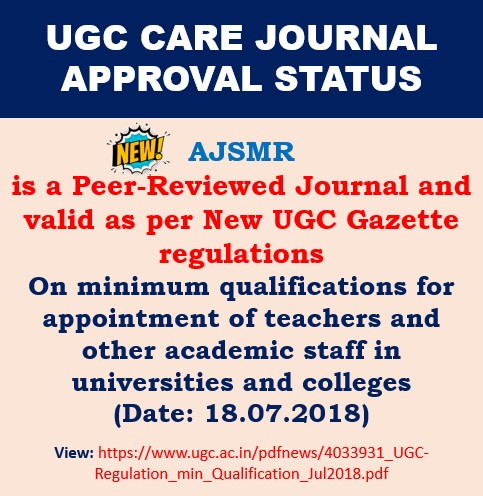Original Research Article I Volume 2 I Issue 4 I 2016
Phytochemical investigation and antidiabetic activity of Leaf extracts of Dalbergia sissoo (Roxb.) in alloxan induced diabetic rats
Sangram. K .Panda, Ram. P. Padhy, Suchismita Pani, Kalakar Bal
The American Journal of Science and Medical Research; 2(4); 1-4
DOI:http://dx.doi.org/10.17812/ajsmr2401
Abstract:
Diabetes mellitus is the most common endocrine disorder. The World Health Organization recommends the use of traditional and plant based medicines for the management of diabetes mellitus. The recommendation made by WHO on diabetes mellitus, investigation on hypoglycemic agents from medicinal plants have become more important The tribes are from villages in the koraput district located in the state of Odisha, India. In this districts, villagers consume decoctions from the leaves of these plants early in the morning for the treatment of ailments like. sore throats, heart problems, dysentery, syphilis, and gonorrhea. In the present investigation we have screened the ethanol ,ethyl acetate,n-butanol and pet.ether extracts of the leaves of the plant for antidiabetic activity in alloxan induced Diabetic rats. The extracts produced a significant antidiabetic effect on first, third, fifth and seventh days at 300 mg/Kg body weight.Among all the extracts of Dalbergia sissoo, ethanol extract of leaves exhibited highly significant antidiabetic activity are comparable with the standard drug (Glibenclamide). The observation values are reported as mean±SEM of each obserevations. The significance of difference among the various treated groups and control group were analysed by means of one way ANOVA followed by Dunnet’s t-test.The value of less then 5% (p < 0.05) was considered statistically significant.
Keywords:
Dalbergia sissoo , Antidiabetic Activity, Glibenclamide
References:
[1]. Jouad H, Haloui M, Rhiouani H, El HilalyJ, Eddouks M., Journal of Ethnopharmacology., 2001,77,175–182 [1] World Health Organization., World Health Organization: Geneva., 1994, 844, pp 78–79.
[2]. Fransworth, NR, Akerele O, Bingel AS, & et al. Drugs from medicinal plants. Bull. WHO, 1985,63, 965 -981
[3]. Tripathy KD, Essential of Medical Phamacology, 3edition, Jeypee Brothers, Medical Publishers Ltd., New Delhi, India, 2003, pp 532-542
[4]. Kamboj VP, Herbal medicine, Curr Sci, 2000, 78(1), 35-51.
[5]. Saha S, Jamil AS, Hilmangsu M, Faroque H,Md. Anisuzzman, Md. Mahadhi H et al.; Ethnomedicinal, phytochemical and pharmacological profile of the genus Dalbergia L. (Fabaceae). Phytopharmacology, 2013; 4(2): 291-346.
[6]. Khare CP; Indian Medicinal Plants: an Illustrated Dictionary. Springer-Verlag, New York, USA, 2007: 199-201.
[7]. Kazembe T, Munyarari E, Charumbira I; Use of traditional herbalmedicines to cure malaria. Bulletin of Environment, Pharmacology and LifeSciences, 2012; 1: 63-85.
[8]. Cheng ZJ, Kuo SC, Chan SC, Ko FN, Teng CM; Antioxidant properties of butein isolated from Dalbergia odorifera. Biochemica et Biophysica Acta, 1998; 1392: 291-299.
[9]. Hajare SW, Chandra S, Sharma JT, Lal J, Telang AG; Anti-inflammatory activity of Dalbergia sissoo leaves Fitoterapia, 2001; 72:131.
[10]. Naushad E, Penugonda R; Antibacteria activity of various stem extracts of D. coromandeliana. Asian Pacific Journal of tropical Biomedicine, 2012; 1381-1391....
Article Dates:
Received: 12 September 2016; Accepted: 25 October 2016; Published: 4 November 2016
How To Cite:
Sangram. K .Panda, Ram. P. Padhy, Suchismita Pani, Kalakar Bal (2016). Phytochemical investigation and antidiabetic activity of Leaf extracts of Dalbergia sissoo (Roxb.) in alloxan induced diabetic rats. The Ame J Sci & Med Res, 2(4):1-4.. doi:10.17812/ajsmr2401.



